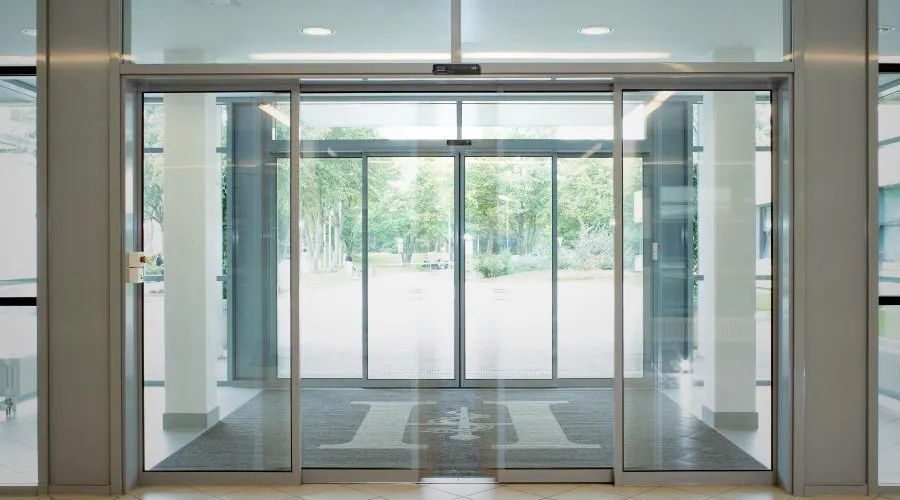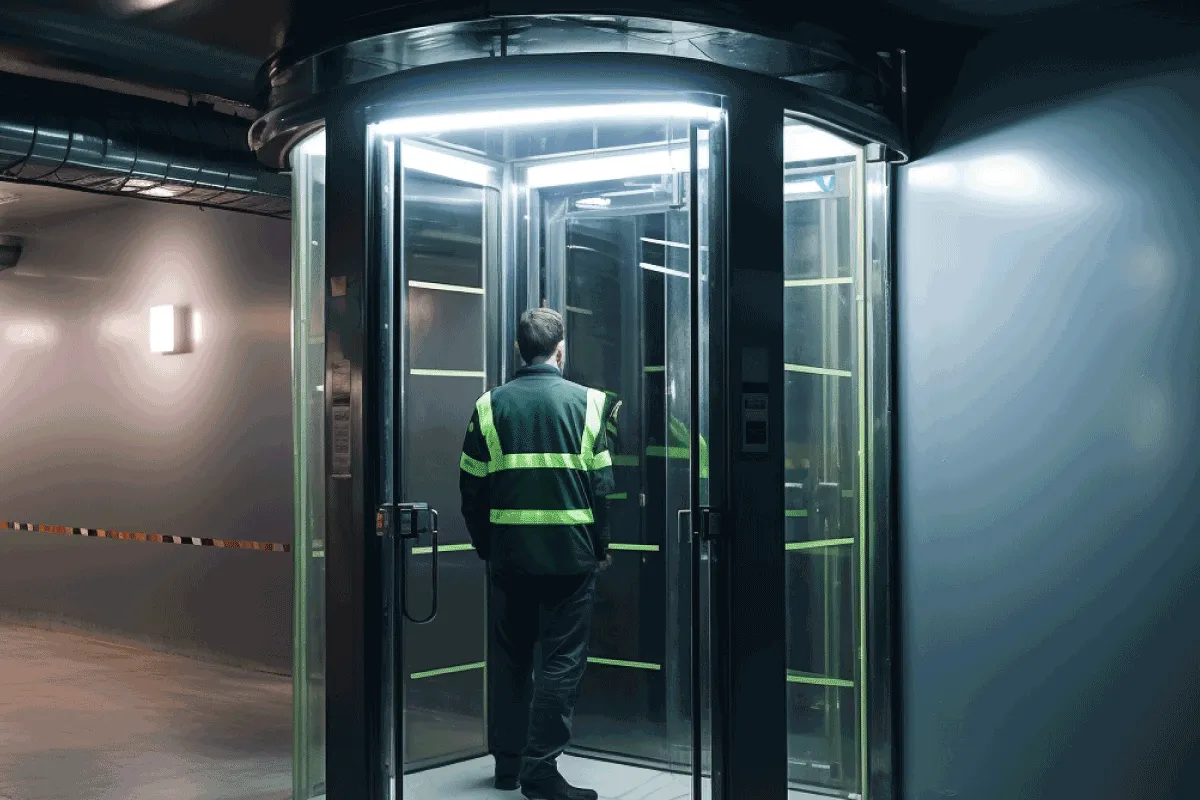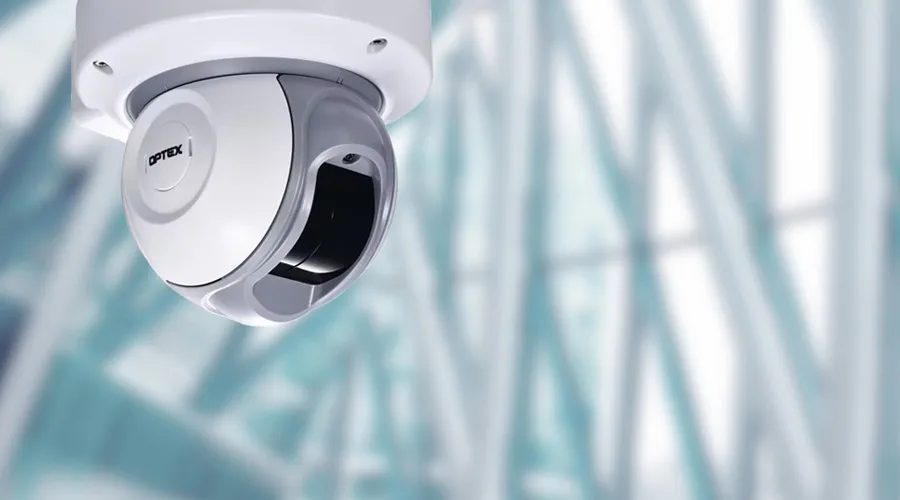Related Solutions
Related Product Series
Related Product
According to the FBI, criminals committed more than 6 million property crimes in the US in 2019. These crimes created $15.8 billion in losses for families and businesses. While many businesses have no security at all, even more have holes in their security systems. By learning about the different types of security sensors available today and when and where to use them, you can guard yourself against these astronomical losses.
Passive Infrared (PIR) Sensors
PIR sensors detect differences in temperature between an object and its surroundings. Most PIR sensors can be adjusted to learn temperature fluctuations during the time of day, high, medium or low sensitivity and “mask’ unwanted areas of detection within its field of view. Many motion detectors use multiple technologies in one in an effort to reduce false alarms. Passive infrared, for example, is commonly paired with microwave detection. Both sensors would need to be activated before an alarm is triggered.
Photoelectric Beams
Active infrared technology employs a two-column sensor for detection of intruders by creating an invisible “trip wire”. The transmitter unit emits invisible active infrared beams. The receiver unit receives and analyses the beams and detects intruders passing between the two columns. You can stack multiple two-column sensors into an enclosure creating a more robust trip wire perimeter.
LiDAR
LiDAR uses a pulsed laser to calculate the distance from the laser source to an object. By measuring the light from the laser’s reflection, representations of surfaces can be created such as the objects size, speed and distance. Once a static scene is established, changes to that scene can trigger a motion alarm.
Radar
Radar uses electromagnetic waves to detect movement within its detection field of view. Radar is typically used for long distance perimeter security applications
How To Choose the Right Sensors
Now that we've discussed the different types of detectors and alarms, let's discuss what factors you should take into consideration when updating your security system. By installing the right sensors, active at the right times and in the right places, you can minimize holes in your home or business security. Before you start, it is essential to consider the following criteria when choosing a sensor:
1. Type of Threat - (What is the type of sensing you need): Examples include intrusion, asset protection, or presence sensing.
2. Environmental Conditions: Every sensing technology has its pros and cons when it comes to operating in varying conditions such as snow, rain, fog, wind, uneven grounds, etc.
3. Potential False / Nuisance Alarm Risks: Every sensing technology is not perfect. Choose sensors that give you the most flexibility dealing with items that can cause false and nuisance alarms such as birds, small animals, over-spill, vegetation growth, sunlight reflection, etc.
4. Type of Security Response: Examples include alarm, video verification, guard dispatch, voice warning, police dispatch, etc.
5. Security System Requirements: Examples include lighting, video management software, alarm control panel, DVR/NVR integration, access control integrations, etc.
6. Installation Requirements: Examples include wireless, IP, PoE, analog, hardwire, height, matching field of view, etc.
Traffic & Time of Day
For areas with a lot of foot traffic, many sensors would trigger false alarms. You should shy away from sensors that you cannot adjust detection areas, sensing range and sensitivity levels. Using cameras, security officers lets you and your employees judge when alarms should activate.
Foot traffic fluctuates with time of day, so you should have different systems and detection schedules in place. At the end of the day, arm detection systems for nighttime protection.
Monitoring
As a business owner, you may rely on a number of ways to monitor your security. Like homeowners, you can stream and store security data on multiple devices including smartphones, tablets and computers. You may also have a central security center. In either case, a trained technician can:
- Inform your staff and security how to obtain and view security sensor data.
- Calibrate all new sensors.
- Ensure sensors are fully integrated into your existing system.
Why Use Varied Sensors
According to the National Center for Victims of Crime, 28% of all burglaries happen in non-residential locations like retail stores, hotels, churches and offices. With predictable holidays and off hours, businesses are perfect targets for intruders thoughtful enough to monitor staff routines.
Oddly enough, non-residential burglaries happen almost as frequently during the day as they do at night according to the same NCVC factsheet. To combat this, your business has to be prepared for intrusions in different areas at different times of day. Setting an alarm at the end of the day does not prevent burglars from cutting a hole in your profits. Additionally, understanding a sensor’s technological strengths and weaknesses is also key factors. Layering different technologies will give you the best results . For example, a perimeter fence has different needs from an entrance gate, parking lot, or building interior. No single technology is the best solution for every need.
Putting Your New Sensors Into Action with OPTEX America
Armed with this information, it's time to put it into action. At OPTEX America, we provide businesses and individuals with user-friendly intrusion sensors and systems. With over 40 years security experience, we maintain stocks of the latest intrusion detection technology for indoor and outdoor use. Our nationwide network of distributors and technicians can provide your business with the peace of mind only found with OPTEX.
Have questions about what intrusion sensors are right for your business? Not sure how to update your security system? Contact OPTEX America today to protect your people, property and profits.
You may be interested in


Protecting Medical Marijuana Facilities with OPTEX REDSCAN Advanced LiDAR Detection
Medical marijuana greenhouses and production sites are high-value targets requiring protection that goes beyond traditional surveillance. Intrusion detection must be accurate, intelligent, and adaptable to both indoor and outdoor environments.






























